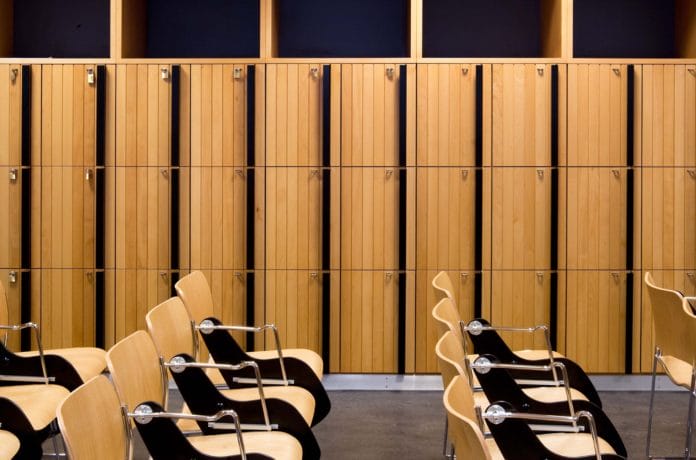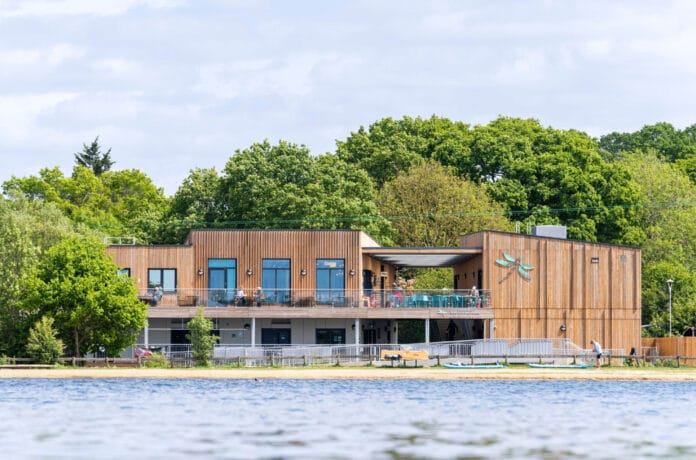
‘Sustainability’ has become a familiar concept and has implications for many different aspects of our everyday lives.
But what does it mean for the built environment?
Sustainable architecture is the practice of developing the built environment sensitively, while retaining and responding to the Earth’s natural resources and habitats.
Sustainable architecture is the practice of developing the built environment sensitively, while retaining and responding to the Earth’s natural resources and habitats.
Architecture is a complex sector, with many different sub-sectors and specialisms, and therefore ‘sustainability’ in architecture can be considered in relation to many different sub-topics.
At HLM, we use the Royal Institute of British Architects’ (RIBA) 8 Sustainable Outcomes as a guide to enable us to design places and spaces that are complimentary to the surrounding environment.
These are:
1: Net Zero Operational Carbon Dioxide Emissions
Operational carbon comes from the production of energy for the day-to-day operation of the building, structure or landscape. It includes low / zero carbon renewable energy technologies on and off-site, plus any recognised offset schemes where applicable.
2: Net Zero Embodied Carbon Dioxide Emissions
Embodied carbon is the carbon emitted from the energy used throughout the manufacture of, transportation to, construction and maintenance of products and materials to site.
This includes extraction, fabrication, and transportation of materials through to considerations about maintenance, replacement, and end of life reuse and/or disposal.
3: Sustainable Water Cycle
Potable water is water that is safe for human consumption, including food preparation.
The overall aim of this outcome is to significantly reduce potable water use to a locally sustainable level, which will vary dramatically between regions and watershed zones.
4: Sustainable Connectivity and Transport
Reducing carbon emissions associated with transport should also consider reducing the need for travel in the first instance. This outcome promotes a greater digital and physical connectivity of our villages, towns and cities, which in turn will significantly reduce the need to travel in the first instance and to reduce the length of travel time. Finally, our buildings and infrastructure has to support the future widespread use of electric and/or hydrogen vehicles.
5: Sustainable Land Use and Bio-diversity
A sustainable development fundamentally implies a significant increase and enhancement of bio-diversity on a site compared to its footprint before development. This also means creating a productive landscape that is capable of food production as well as creating habitats for wildlife.
6: Good Health and Wellbeing
This primarily relates to the indoor health, visual, aural and thermal comfort, and occupant wellbeing. No single metric can measure the successful achievement of this outcome: it requires a core set of objective and subjective metrics.
7: Sustainable Communities and Social Value
This outcome relates to the social impact of a development on the end users and the wider community. The ultimate goal for this outcome is to create places for people that support not only basic needs of security, shelter, and health, but to enhance individual and social wellbeing, and community identity.
8: Sustainable Life Cycle Cost
This outcome seeks to design for use, and align capital expenditure (capex) and operational expenditure (opex) budgets which in turn unlocks whole life value over the life of the building
What does this mean in practice?
The outcomes as outlined above provide a challenging framework for architects. As a profession, it is important that we are consistently researching and developing innovative ways of making buildings work more efficiently. This includes developing and trialling ‘new’ materials made from natural resources, reusing materials from previous buildings, revitalizing existing buildings for new uses rather than choosing demolition, and working on efficiencies of manufacture.
There are steps that we can follow, to ensure we are operating as sustainably as possible:
- Retrofit first – can we successfully reuse an existing building rather than building new, without having negative implications?
- Fabric-first approach (new builds) – when we can’t reuse buildings, can we select materials that are renewable, efficient as possible, and/or reused from previous buildings?
- Think:offsite – how much of the build can we manufacture using offsite methods, which increase production rate and quality control, thus creating a more efficient building?
- Modern Methods of Construction (MMC) – how can we use new technologies and methods to streamline the design, supply chain, and construction of builds?
- Design for Manufacture and Assembly (DfMA) – can we integrate products in the building fabric that are designed for ease of manufacture, assembly, and disassembly, which improve efficiencies of construction and contribute to a circular economy?
- Biophilic design – how can we integrate biophilic design to promote habitats, boost user wellbeing and reduce the waste of water?
Next month, we will start our sustainability series, where members of HLM’s sustainability team will discuss various sub-topics within this complex arena.


